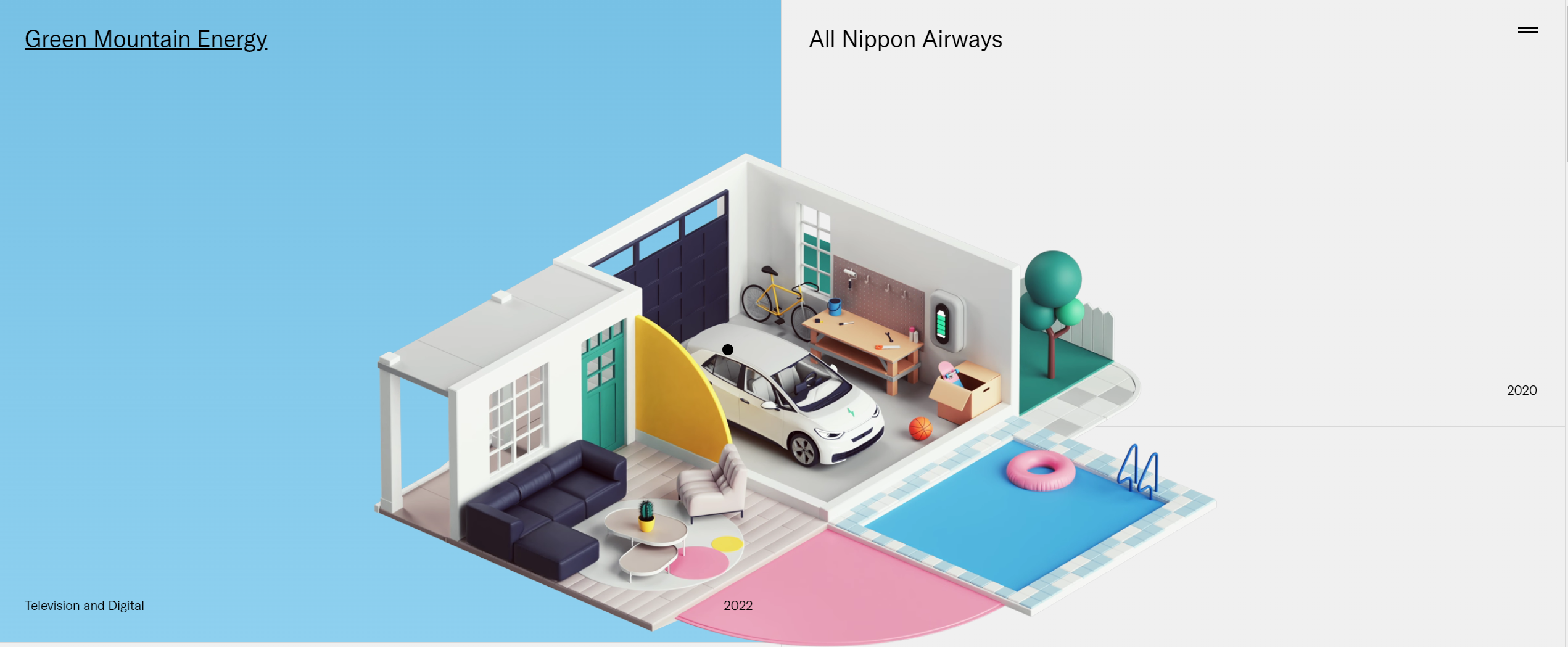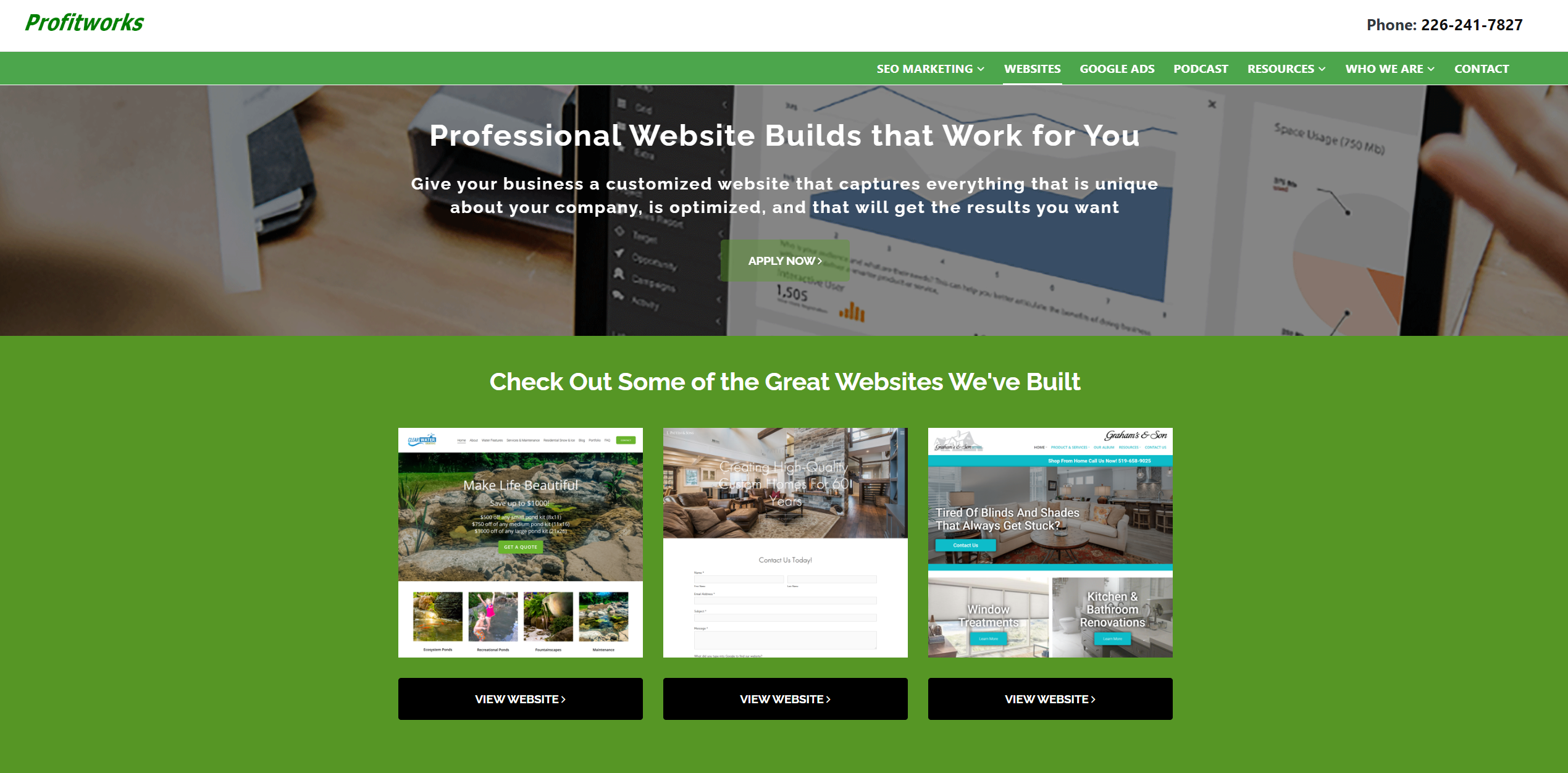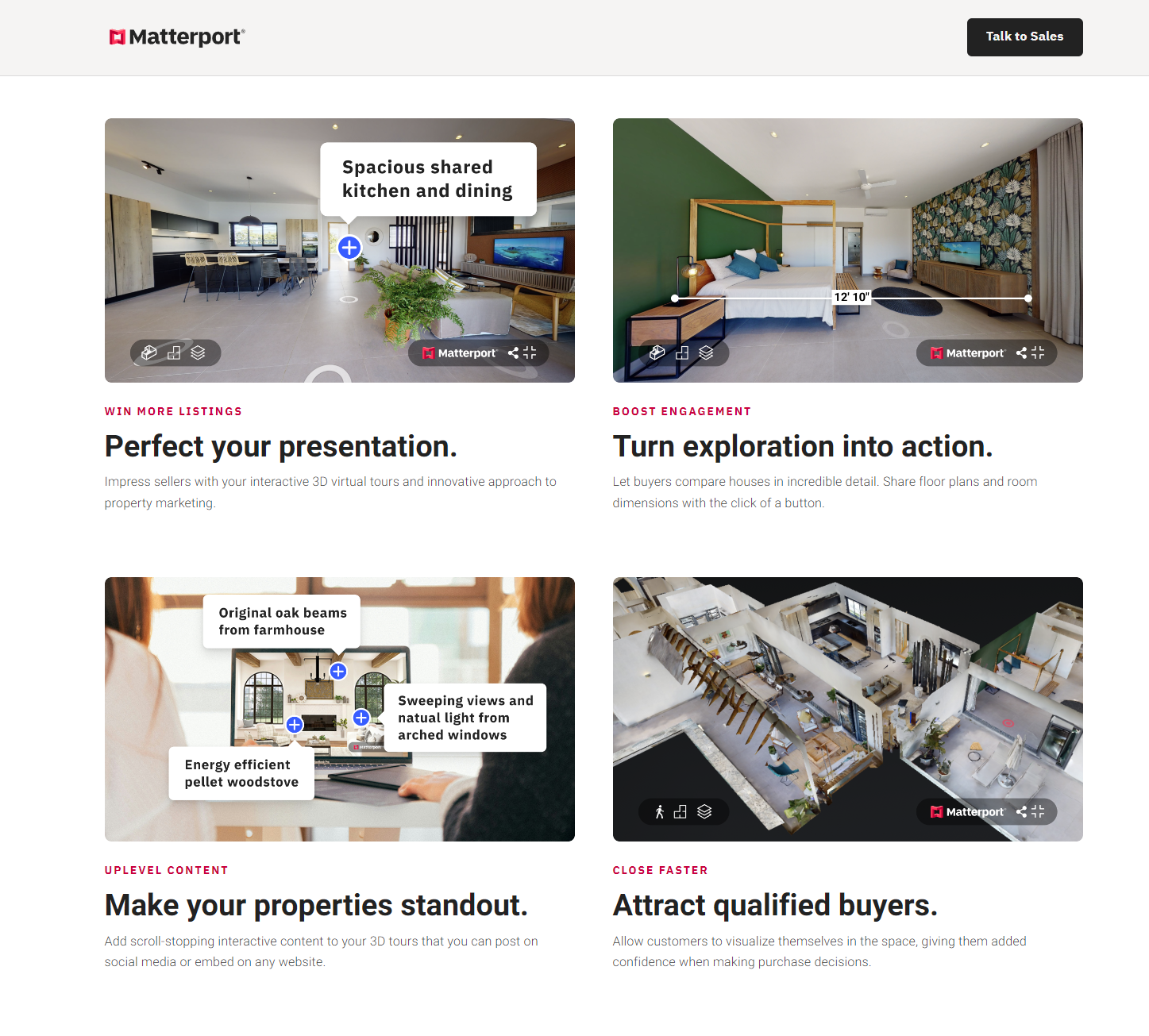3D Graphics in Web Design for Modern Visual Requirements
Web design has come a long way since its inception, continuously adapting to the ever-evolving demands and preferences of modern users. As technology advances, web designers have leveraged new tools and capabilities to create visually stunning websites that captivate and engage users on a deeper level. One significant trend that has emerged is the integration of 3D graphics in web design, offering a deep impact and increased realism that revolutionizes the visual requirements of modern websites.
Click on each corresponding link to jump ahead:
- The Power of 3D Graphics
- Enhancing User Experience
- Boosting Brand Perception
- Expanding Possibilities with VR and AR
- Inspiring Innovation and Creation
- What is 3D Web Design
- How do I add 3D Elements to my Website
- Conclusion
For more information on how 3D web design can increase user experience on your website, Contact Profitworks.
1) The Power of 3D Graphics
The incorporation of three-dimensional (3D) elements within web design presents an opportunity to craft a heightened and visually enthralling experience for users. In contrast to two-dimensional (2D) graphics, the integration of 3D elements introduces layers of visual depth, providing users with a tangible sense of space and dimension. This heightened realism serves to elevate the overall user experience, rendering the website more aesthetically appealing and compelling. Whether employed for product displays, architectural visualizations, or interactive animations, 3D graphics imbue a sense of authenticity that can profoundly influence the perception of a brand or product. Through the utilization of a fashion web design agency, brands can cultivate a distinctive and unforgettable online presence that resonates effectively with their target audience.
2) Enhancing User Experience

Source: Peter Tarka
One of the principal advantages associated with the integration of 3D graphics into web design lies in its capacity to effectively communicate narratives and convey intricate information in a more intuitive manner, thereby significantly elevating the overall user experience. By incorporating 3D visualizations, websites gain the ability to present data, processes, or concepts in a manner that is both accessible and engaging, capturing user attention and sustaining active involvement with the content.
The interactive and dynamic attributes inherent in 3D graphics enable users to actively participate in the exploration and comprehension of the presented information. Granting users the capability to interact with 3D elements facilitates object manipulation, rotation, zooming in on details, and customization based on individual preferences. For instance, a car manufacturer can showcase the intricate details and features of their vehicles through an interactive 3D model, enabling users to explore and personalize the car before making informed purchase decisions. This heightened level of interactivity not only enhances user enjoyment but also empowers them to make well-informed choices.
Moreover, the immersive nature of 3D graphics contributes to a more indelible and engaging user experience. The depth and realism introduced by 3D elements have the capacity to evoke emotions, capture attention, and create a lasting impression. Whether employed in a virtual tour of a hotel, a realistic visualization of a home interior, or an interactive product demonstration, 3D graphics possess the ability to forge an emotional connection between the user and the content, culminating in a more positive and impactful user experience.
3) Boosting Brand Perception

Source: Profitworks
The integration of 3D graphics in web design holds substantial potential for shaping the perception of a brand or product, playing a pivotal role in elevating overall brand esteem. The depth and authenticity inherent in 3D elements contribute to fostering trust and credibility among users. A meticulously crafted and realistic 3D representation of a product can evoke profound emotional responses, fostering increased user engagement and positioning the brand as a dependable choice.
Through the strategic incorporation of 3D graphics to showcase products or services, brands can adeptly accentuate key features and distinctive selling points. The heightened visual representation facilitated by 3D elements empowers users to gain a more comprehensive understanding of the offerings. Whether facilitating a virtual tour of a hotel, enabling users to explore and envision amenities and rooms, or conducting an interactive product demonstration highlighting functionality and benefits, 3D graphics deliver an immersive and engaging experience that leaves an enduring impression.
4) Expanding Possibilities with VR and AR
The proliferation of virtual reality (VR) and augmented reality (AR) technologies has significantly broadened the scope for integrating 3D graphics into web design, presenting new and compelling prospects for businesses. Through the incorporation of VR and AR experiences on websites, businesses can transport users to immersive virtual environments or seamlessly overlay digital information onto the real world. This level of interactivity and realism provides an innovative avenue for businesses to showcase their products, services, or brand identity. Engaging the services of a specialized fashion web design firm such as Qream empowers clients not only to enhance the visual appeal of their website but also to amplify their brand's online visibility.
VR technology enables users to fully immerse themselves in virtual environments, cultivating a profound sense of presence and interactivity that transcends conventional web experiences. By integrating VR into web design, businesses can deliver captivating and memorable experiences to users. For instance, a real estate agency could facilitate virtual property tours, allowing potential buyers to explore homes remotely. Users can navigate through virtual rooms, scrutinize details, and even customize specific aspects, providing a realistic preview of the living experience. This immersive approach not only saves time but also delivers a distinctive and interactive encounter with the brand.
5) Inspiring Innovation and Creation

Source: Matterport
The incorporation of 3D graphics into web design presents a challenge to designers and developers, urging them to transcend conventional boundaries and explore innovative avenues. The introduction of depth and realism offers opportunities for distinctive storytelling, interactive experiences, and engaging user interfaces. Through the integration of 3D elements, web designers can access a realm of creativity and innovation, enabling the creation of visually stunning websites that distinguish themselves in a crowded digital landscape.
The immersive qualities of 3D graphics encourage designers to surpass the limitations of 2D design, prompting consideration of novel methods to engage users. Ranging from interactive animations responsive to user actions to virtual reality experiences transporting users to alternate realms, 3D graphics provide boundless prospects for creativity. This pursuit of innovation not only augments the designers' prowess but also elevates the overall user experience, rendering websites more captivating and memorable.
Moreover, with ongoing technological advancements, designers will witness continual enhancements in tools and capabilities within the domain of 3D graphics. The emergence of more potent hardware, sophisticated software, and avant-garde techniques enables designers to explore new methodologies and extend the limits of what is achievable in web design. This perpetual evolution in technology acts as a catalyst for creativity and innovation, fostering the development of increasingly immersive and visually striking websites that enthrall users, ensuring their sustained engagement.
6) What is 3D Web Design
3D web design for beginners - Webflow CSS tutorial
Three-dimensional (3D) web design is a cutting-edge approach that incorporates spatial depth and realism into the digital realm, revolutionizing the traditional two-dimensional web design landscape. Unlike flat, static graphics, 3D web design introduces an additional dimension, creating a sense of depth and perspective that enhances the overall user experience. This innovative technique employs three-axis coordinates—length, width, and height—to bring a tangible and immersive quality to online content.
In 3D web design, elements can be manipulated in three-dimensional space, allowing for dynamic interactions and lifelike animations. This multidimensional approach is particularly impactful when presenting complex data, products, or architectural concepts, as it enables users to engage with content in a more intuitive and visually compelling manner. By leveraging 3D graphics, web designers can craft websites that transcend the limitations of traditional flat designs, offering users a sense of depth, interactivity, and authenticity.
The integration of 3D technology in web design is not merely an aesthetic choice; it also serves functional purposes. Through virtual reality (VR) and augmented reality (AR) implementations, 3D web design enables users to navigate immersive virtual environments or overlay digital information onto the real world, fostering a new era of interactive and experiential online engagement. As technology continues to advance, the potential for 3D web design to redefine online experiences and captivate users in novel ways remains vast and promising.
7) How do I add 3D Elements to my Website
How to Create 3D Website Designs With No Code
Incorporating 3D web elements into your website can elevate its visual appeal and user engagement. Begin by selecting a web development platform that supports 3D graphics, ensuring compatibility with your chosen tools and technologies. Collaborate with a skilled 3D designer or utilize pre-made 3D models to streamline the integration process. Implementing these elements requires a combination of HTML, CSS, and JavaScript to bring your 3D vision to life.
Utilize WebGL, a JavaScript API for rendering 3D graphics in the browser, to seamlessly integrate 3D elements. Consider frameworks like Three.js or Babylon.js, which simplify the implementation process and offer a range of features for creating immersive experiences. Enhance user interactivity by incorporating responsive design principles, allowing users to interact with 3D elements across various devices.
Optimize loading times by managing file sizes and consider implementing lazy loading for 3D assets to prioritize a smooth user experience. Regularly test your website across browsers and devices to ensure a consistent and reliable display of 3D elements. By carefully planning, utilizing appropriate tools, and maintaining performance considerations, you can successfully integrate 3D web elements into your website, enhancing its visual aesthetics and user engagement.
8) Conclusion
The integration of 3D graphics in web design has revolutionized the visual requirements of modern websites. The inclusion of 3D elements provides a deep impact and increased realism that captivates and engages users on a whole new level. By leveraging the depth, authenticity, and interactivity of 3D graphics, businesses can create immersive and visually captivating experiences that leave a lasting impact. Whether it's through architectural visualizations, interactive product displays, or virtual reality experiences, 3D graphics have the potential to elevate web design to new heights, providing businesses with a powerful tool to attract, captivate, and convert their target audience. As technology continues to advance, the possibilities for incorporating 3D graphics in web design will only continue to expand, inspiring designers to push the boundaries of creativity and create truly unique digital experiences.
For more information on conventional and 3D web design, Contact Us.
